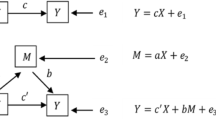Abstract
Analysis of how government investment promotes economic development and employment is important for improving government’s decision-making and promoting high-quality economic development in western China. In this paper, the authors take Xinjiang as an example to conduct such an analysis. Firstly, based on the competitive input-output table of Xinjiang, the non-competitive input-output tables of 2007, 2012 and 2015 are compiled in this paper. Secondly, the contribution of Xinjiang government investment, especially the major government investment projects, to the value-added of Xinjiang, other provinces and cities in China and abroad are calculated. Thirdly, this paper uses the non-competitive input-output table to compile the sectoral employment vector, and uses the input-occupancy-output technique to measure how government investment promotes employment. The results show that Xinjiang government investment contributes the most to the value-added of Xinjiang and other provinces and cities, but less to foreign countries; the government investment create the most job opportunities in projects including transportation projects and livelihood projects etc.
Similar content being viewed by others
References
Zhang H Y, Investment and economic development situation in 2016, Construction Machinery Technology & Management, 2016, 29(3): 29–31.
Wei M and Li S H, Research on the measurement of high quality development level of China’s economy in the new era, The Journal of Quantitative & Technical Economics, 2018, 35(11): 3–20.
Zhou Q R, Speaking at the cross-border high-end seminar of “facing the world and facing the future: Shanghai vision and Jing’an plan”, 2019.
Su Z, Li Y, and Xu S D, Optimization of China’s investment structure under the “structural” slowdown: An analysis based on the effect of four trillion yuan investment, Public Finance Research, 2013, (1): 43–47.
Research group of macroeconomic research center of Chinese Academy of financial Sciences, Bai J M, Shi Y H, et al., Research on the evaluation of government investment effect — Analysis on the macro effect of fixed assets investment within the national budget, Fiscal Science, 2017, 21(9): 93–111.
Cao D J, Li Ch Q, and Dai P H, Historical experience analysis of government investment on China’s economic growth, Macroeconomics, 2010, 138(5): 56–61.
Li Y H, Research on local government investment in China, Doctor’s degree thesis, Xiamen University, Xiamen, 2002.
Shi B F, Analysis of the effect of expanding government investment in 2009 and suggestions on investment policies in 2010, China Economic & Trade Herald, 2010, 625(6): 15–17.
Huang S P, Peng X Z, and Zhu Y, The pulling effect of investment and economic growth on employment in Shanghai, East China Economic Management, 2011, 25(12): 1–5.
Yu A J and Zhou L Y, The relationship between government investment and economic growth, residents’ income and employment, Journal of Central University of Finance & Economics, 2004, (9): 22–47.
Eloranta E and Holmström J, Productivity reconsidered: Critical assessment of investment, Joural of Production Economics, 1998, 56(20): 133–144.
Barro R J, A cross-country study of growth, saving, and government, NBER Working Papers 2855, National Bureau of Economic Research, 1998.
Tian K, Research on the investment choice of local government — Based on the perspective of balancing urban and rural development, Doctor’s degree thesis, Southwestern University of Finance and Economics, Chengdu, 2010.
Qin X Z, Zhang K, and Sun X L, Research on the pulling effect of government investment from the perspective of industrial linkage, The Journal of Quantitative & Technical Economics, 2010, 27(9): 3–17.
Qin X Z and Zhang K, Research on the effect of government investment from the perspective of industrial structure and household consumption, The Journal of Quantitative & Technical Economics, 2011, 28(12): 37–54.
Zhu J, Research on dynamic efficiency of China’s investment, China Investment Magazine, 2014, 33(12): 15–24.
Shen S Z, The change of China’s investment system and its impact on investment efficiency — A government perspective, Doctor’s degree thesis, Fudan University, Shanghai, 2016.
Wang J Y, Chen Z, and Long S B, An empirical analysis of the role of “one belt and one road” infrastructure investment in China’s economy: Based on the multi sector input-output perspective, Journal of Jiangxi University of Finance and Economics, 2016, 104(2): 11–19.
Chen X K and Yang C H, Input-Output Technology, Science Press, Beijing, 2011.
Jin B, Economic Research on “high quality development”, China Industrial Economics, 2018, 361(4): 5–18.
Jiang W M, Fan J, and Tian K L, Input-output production structure and non-linear production possibility frontier, Journal of Systems Science and Complexity, 2021, 34(2): 706–723.
Tian K L, Dietzenbacher E, and Jong-A-Pin R, Measuring industrial upgrading: Applying factor analysis in a global value chain framework, Economic Systems Research, 2019, 31(4): 642–664.
Author information
Authors and Affiliations
Corresponding author
Additional information
This research was supported in part by by the National Natural Science Foundation of China under Grant Nos. 71903186 and 71988101, and in part by the Major Program of National Fund of Philosophy and Social Science of China under Grant No. 19ZDA062.
This paper was recommended for publication by Editor ZHANG Xinyu.
Rights and permissions
About this article
Cite this article
Yang, X., Tian, K., Zhu, L. et al. Government Investment and High-Quality Economic Development — Measurement and Analysis Based on Input-Output Method. J Syst Sci Complex 35, 993–1008 (2022). https://doi.org/10.1007/s11424-022-0268-8
Received:
Revised:
Published:
Issue Date:
DOI: https://doi.org/10.1007/s11424-022-0268-8




